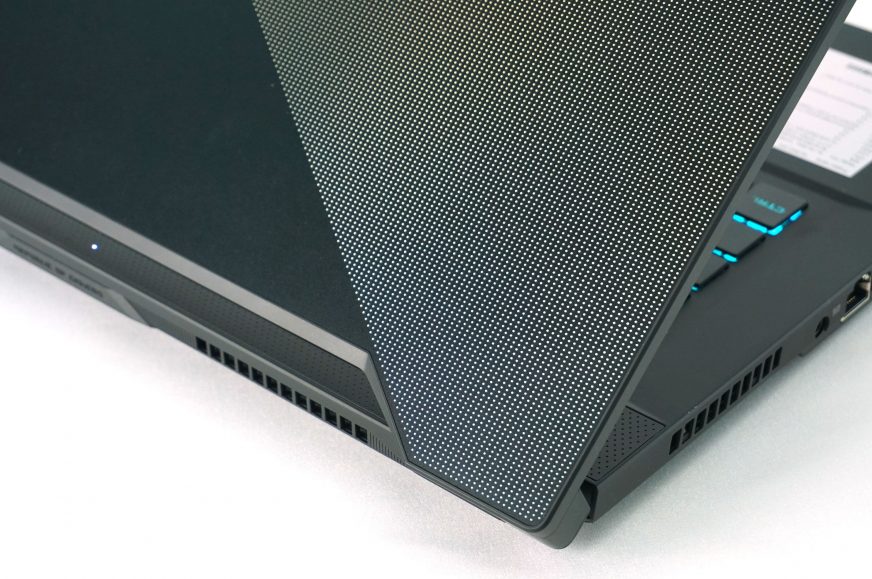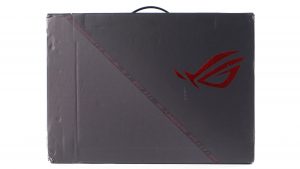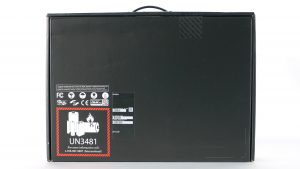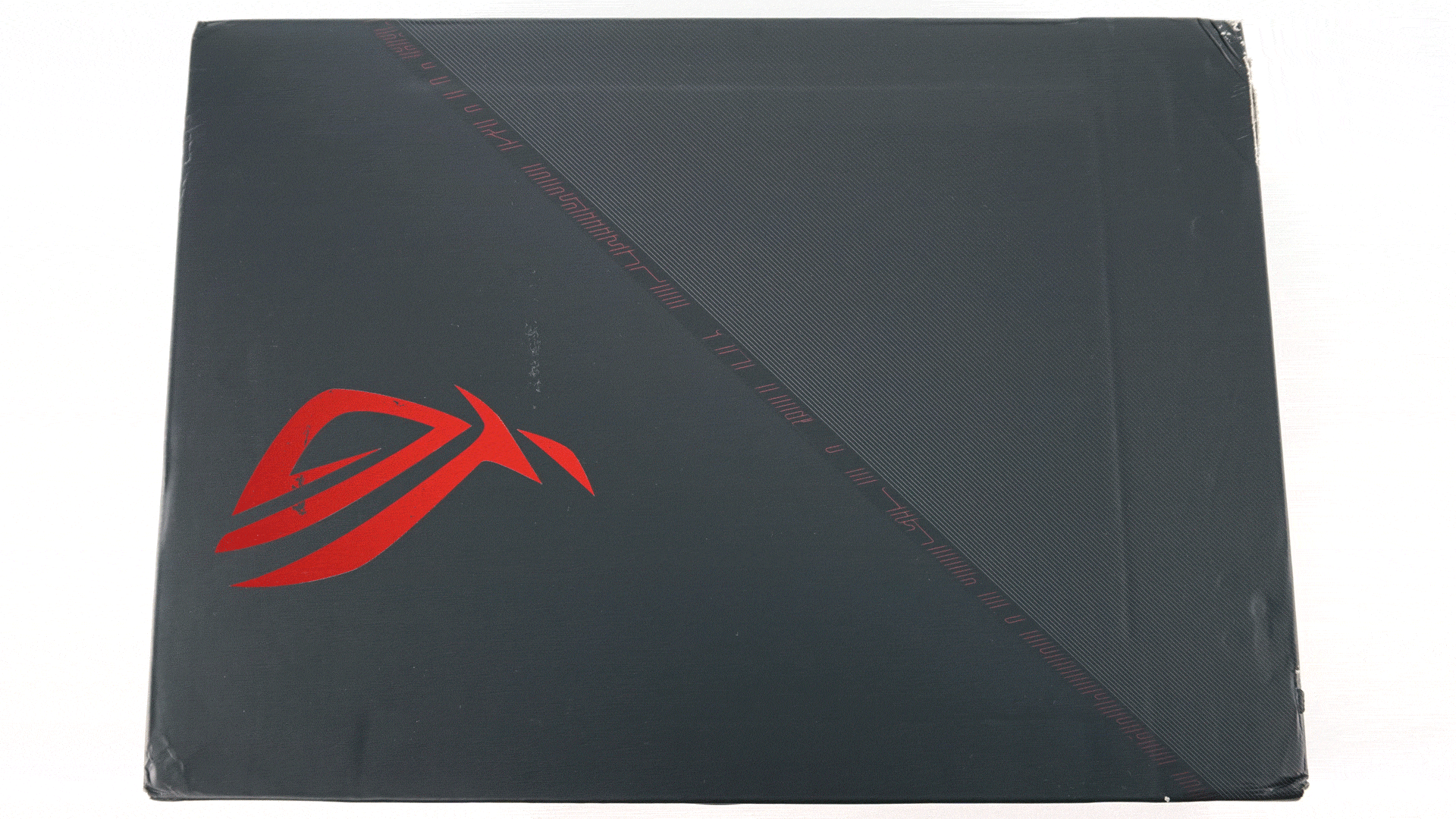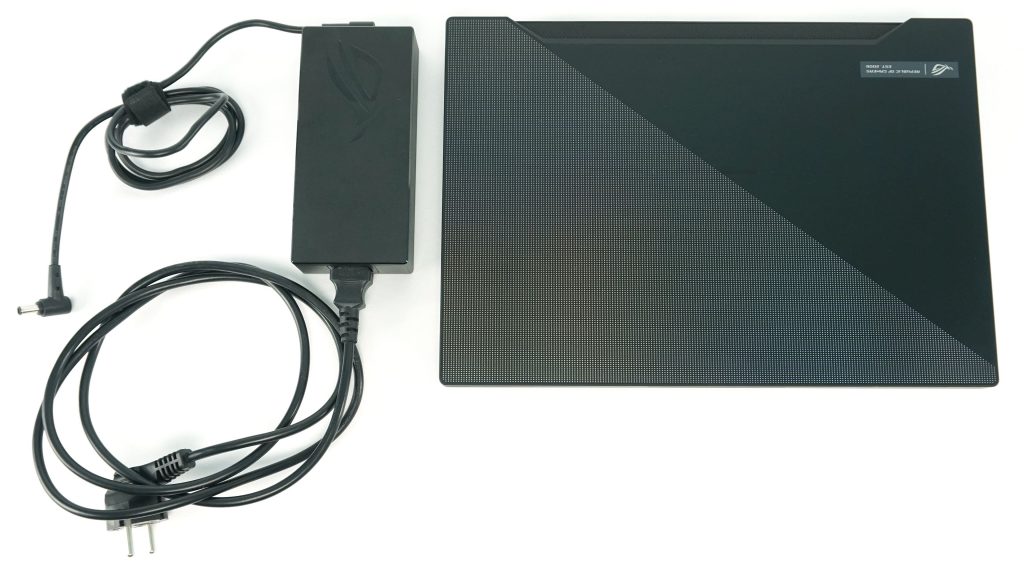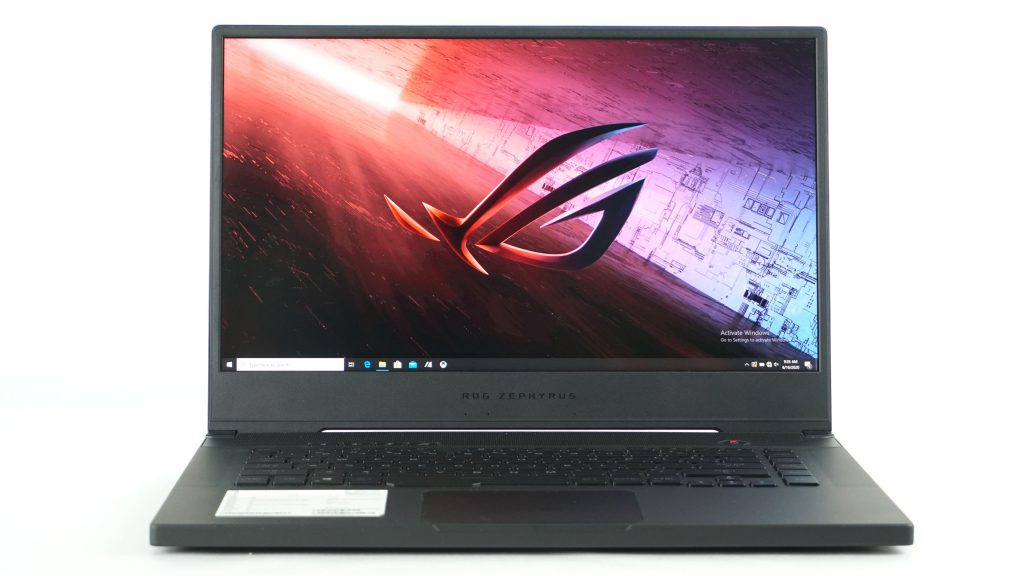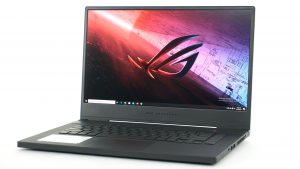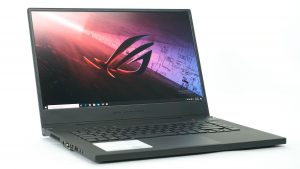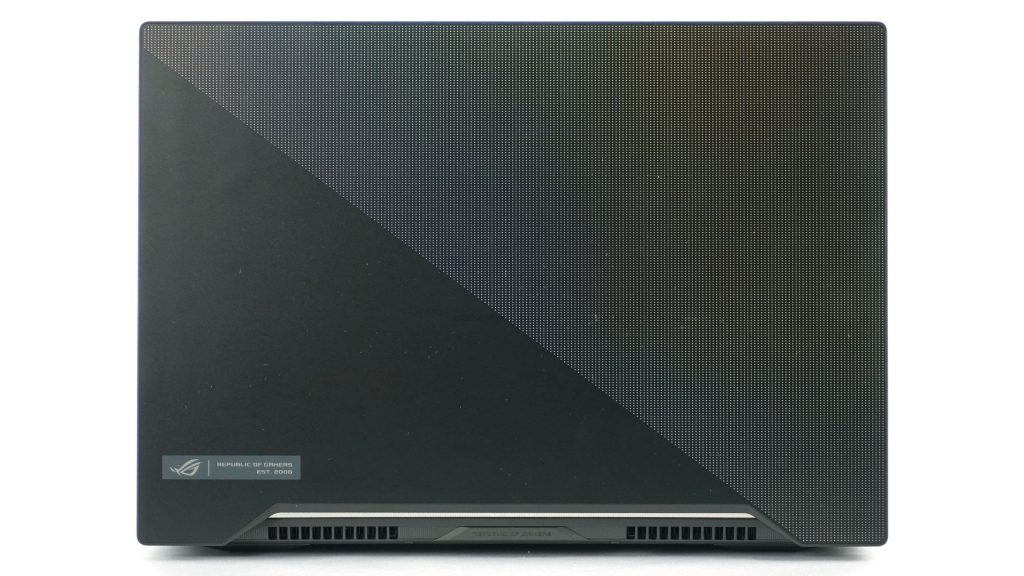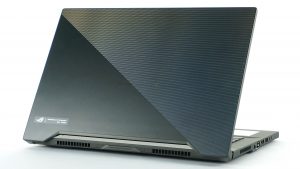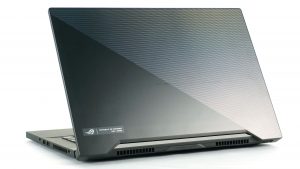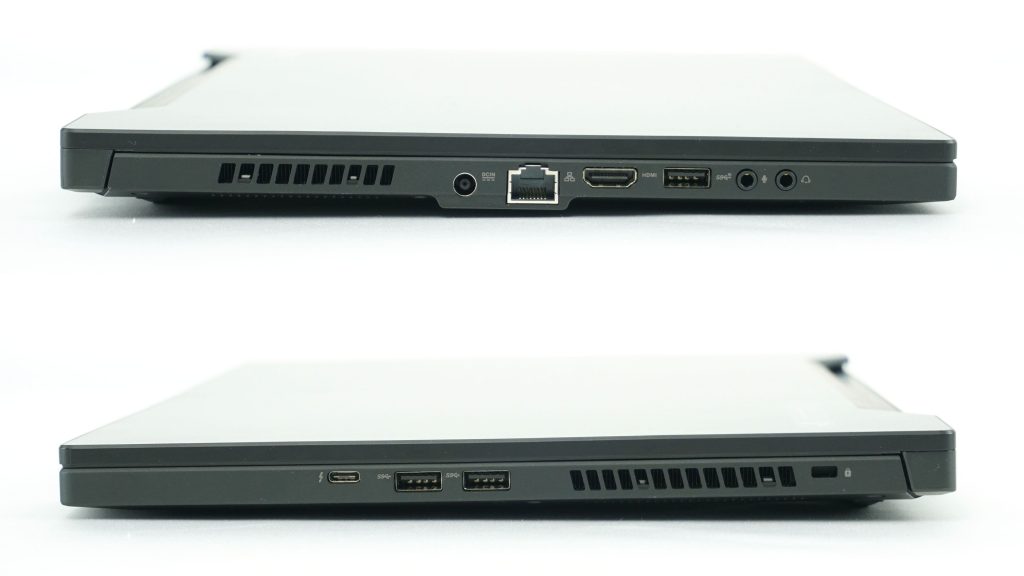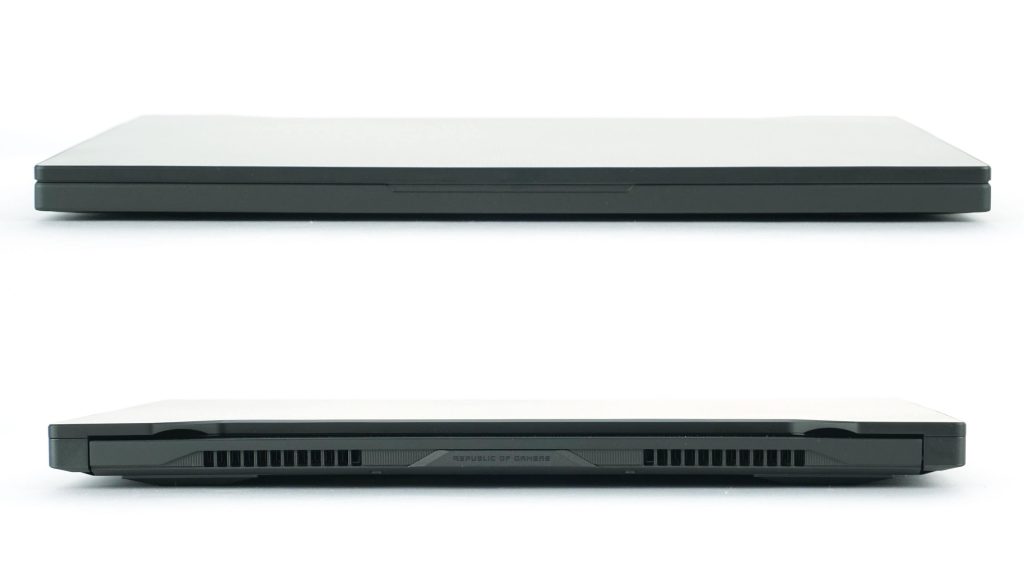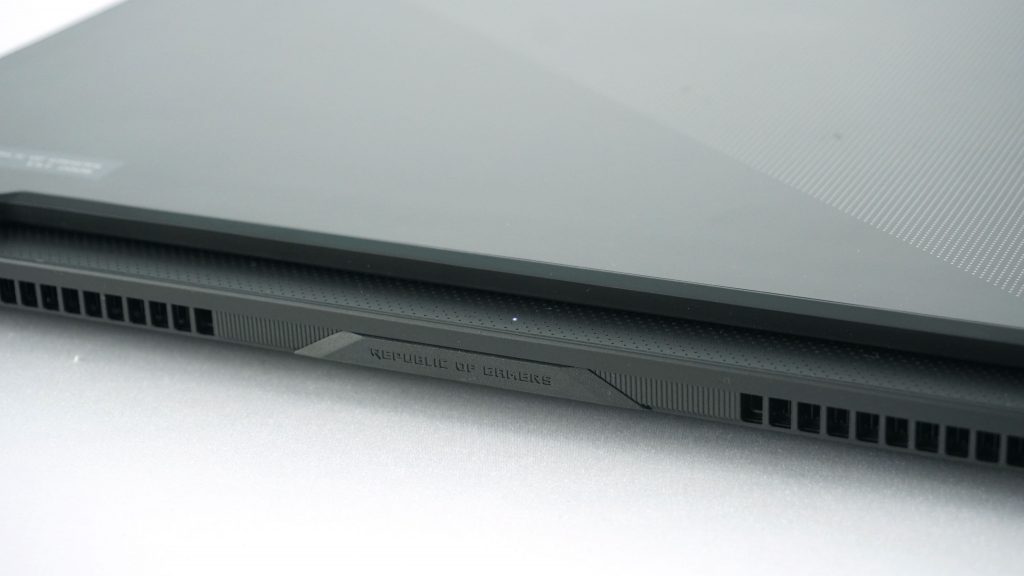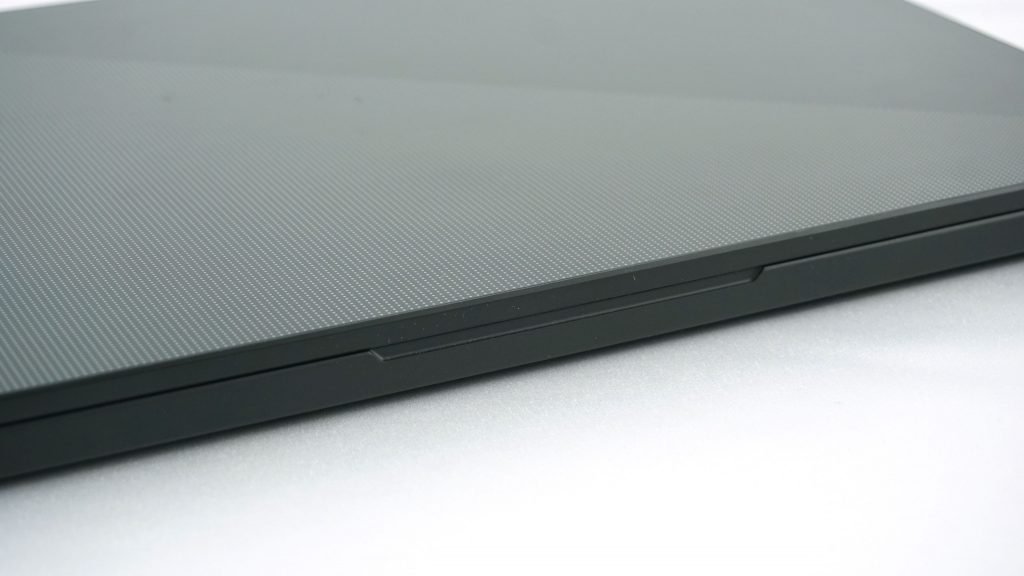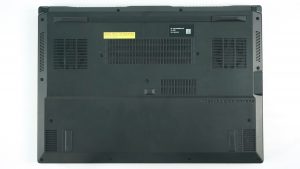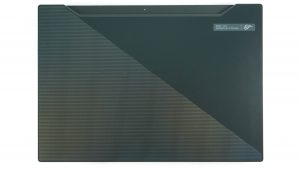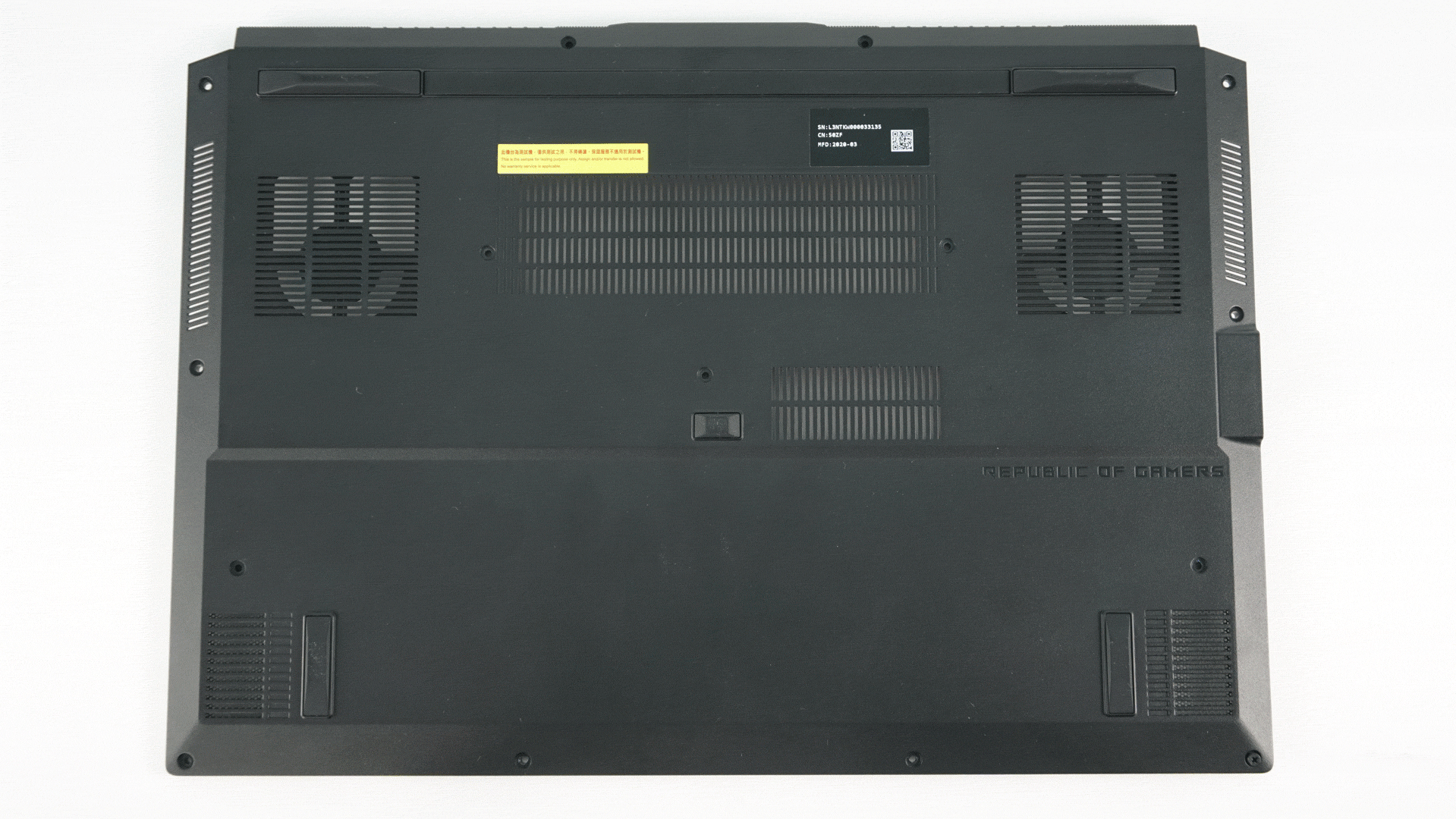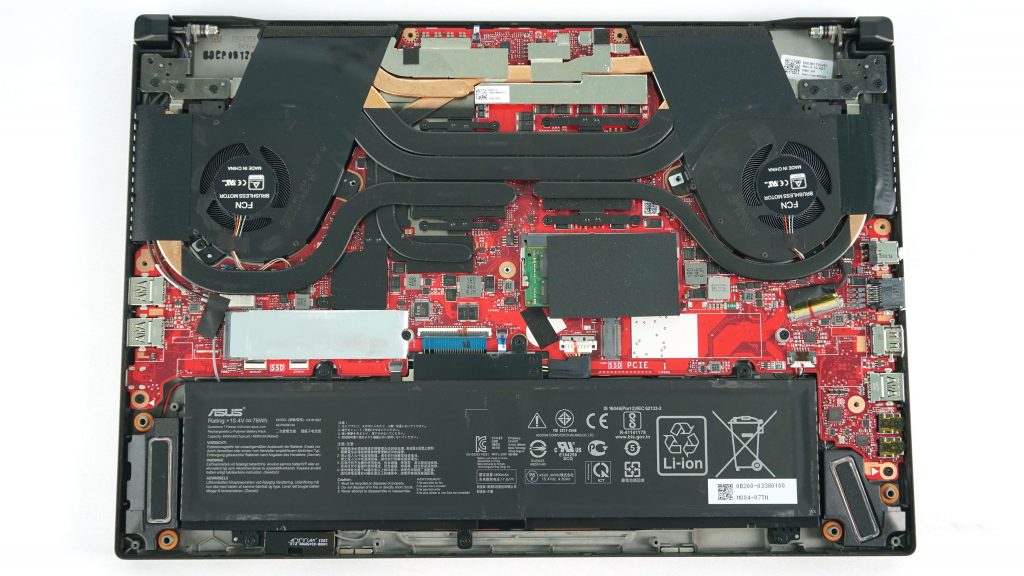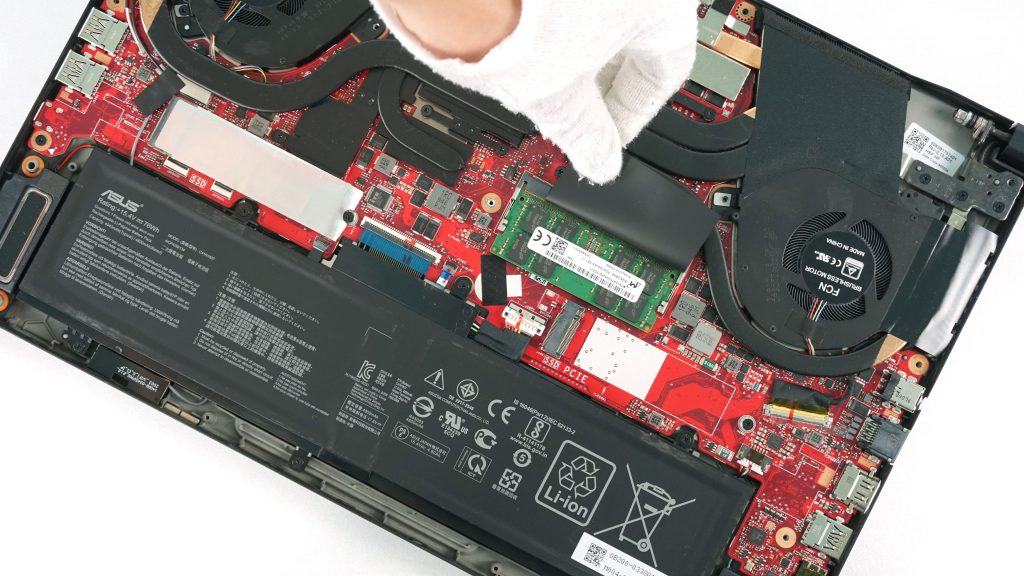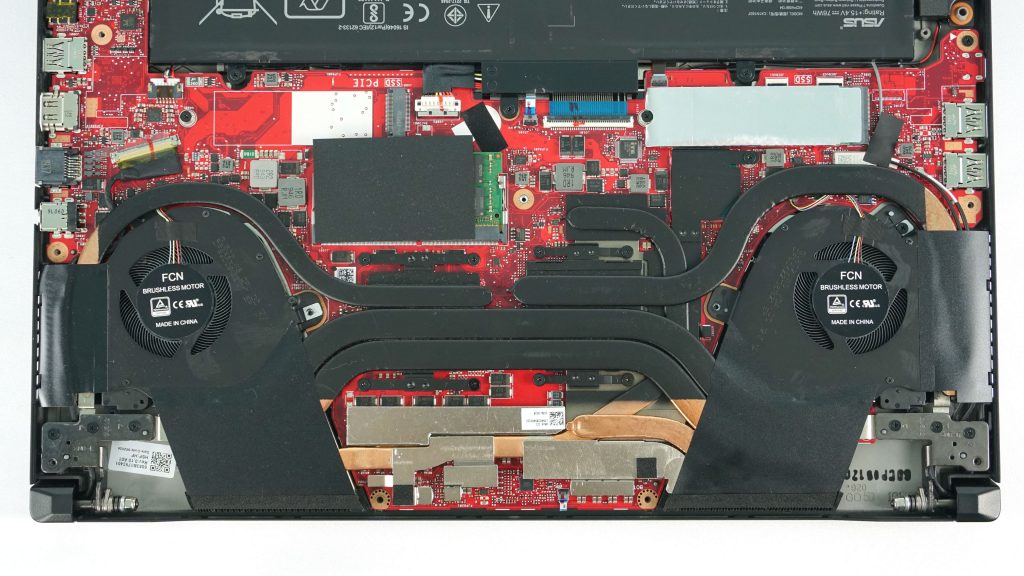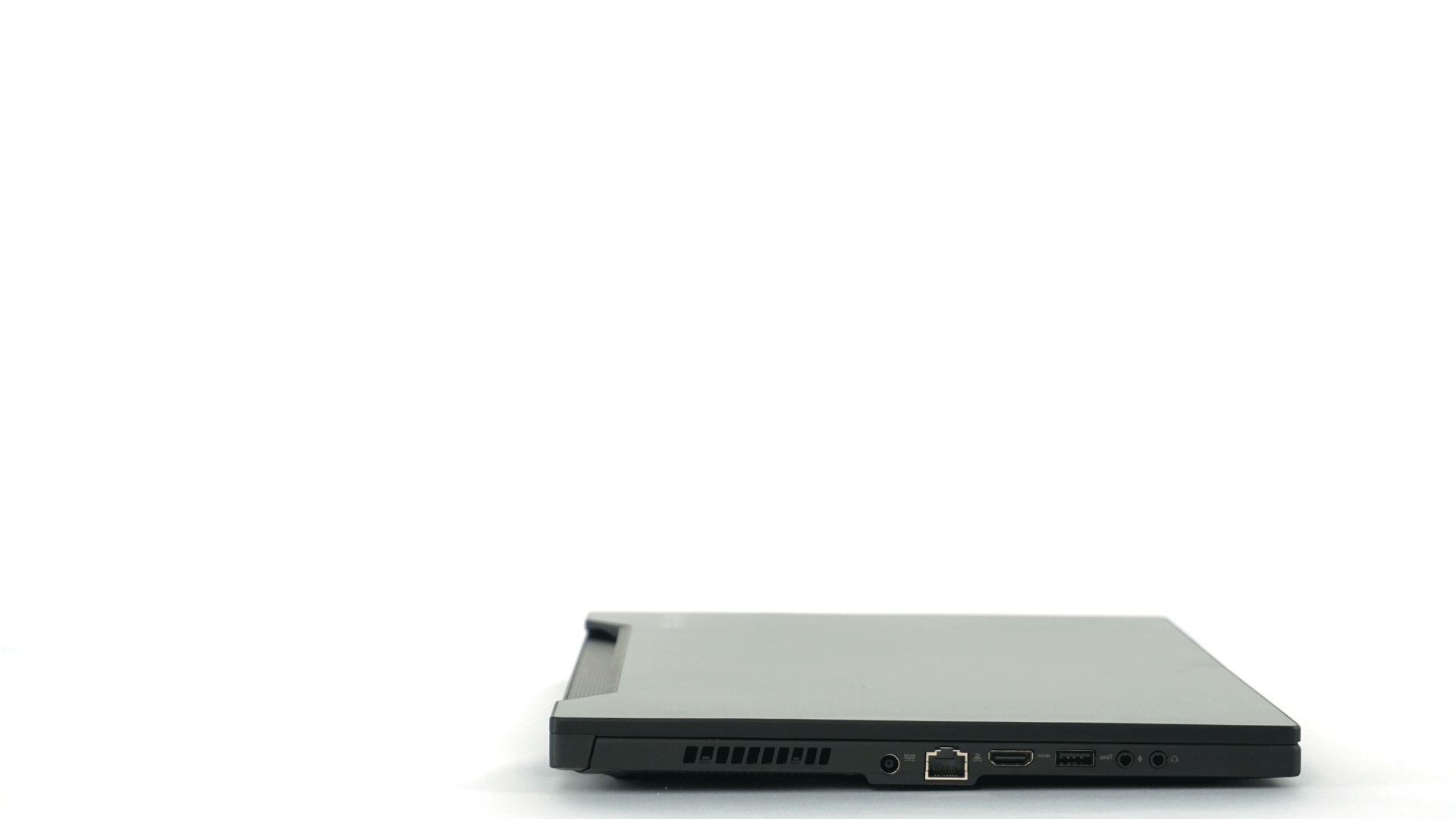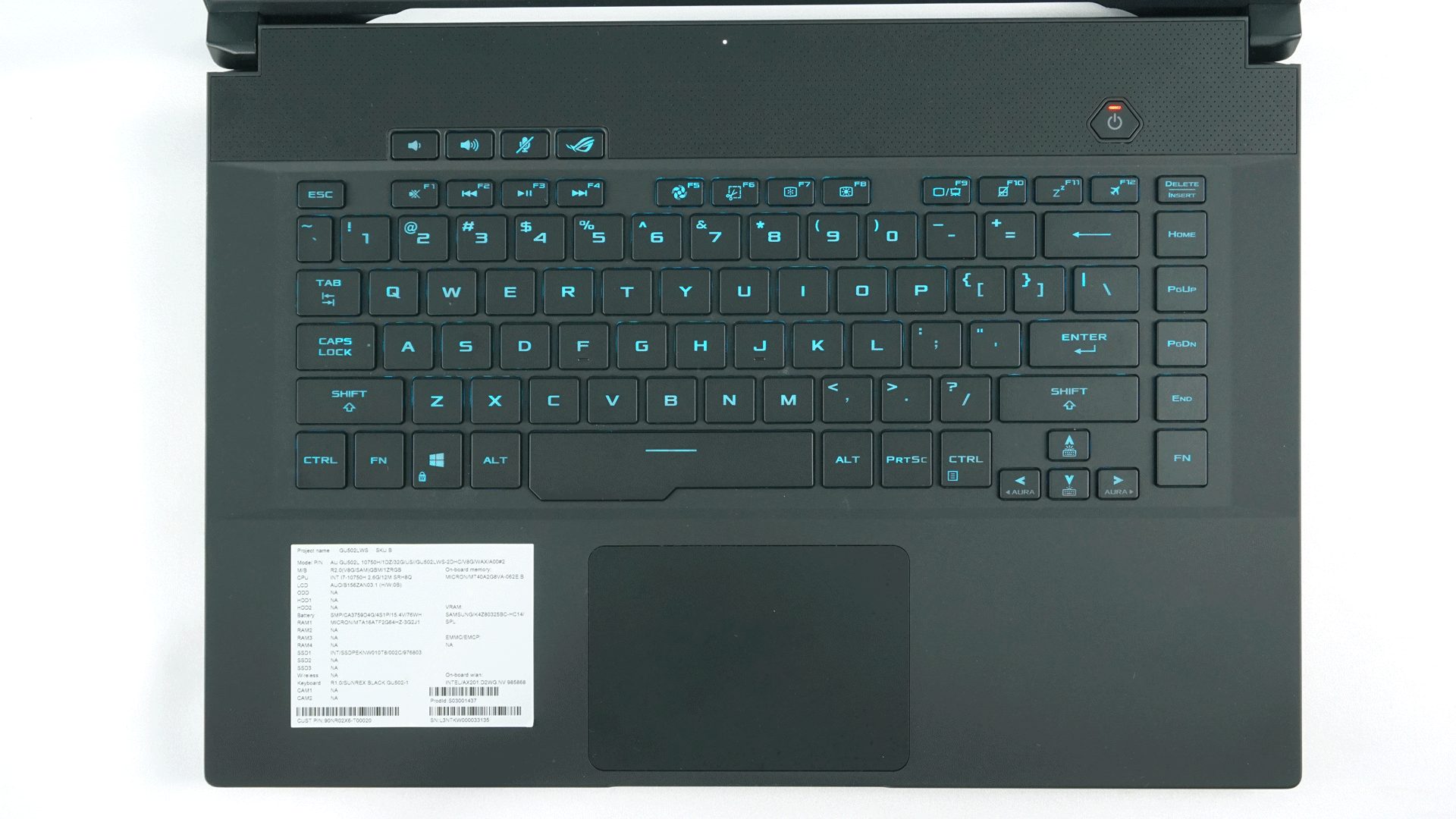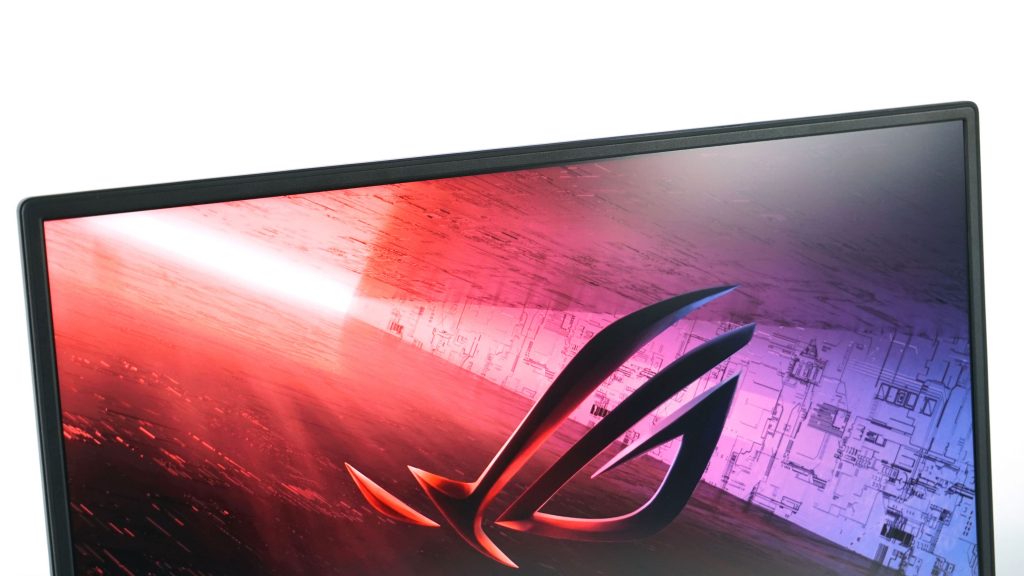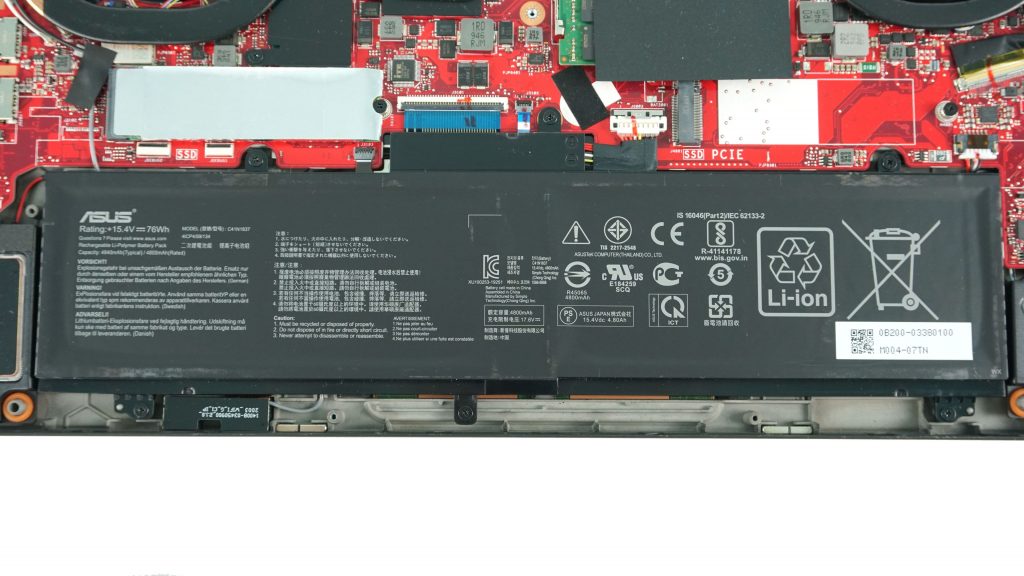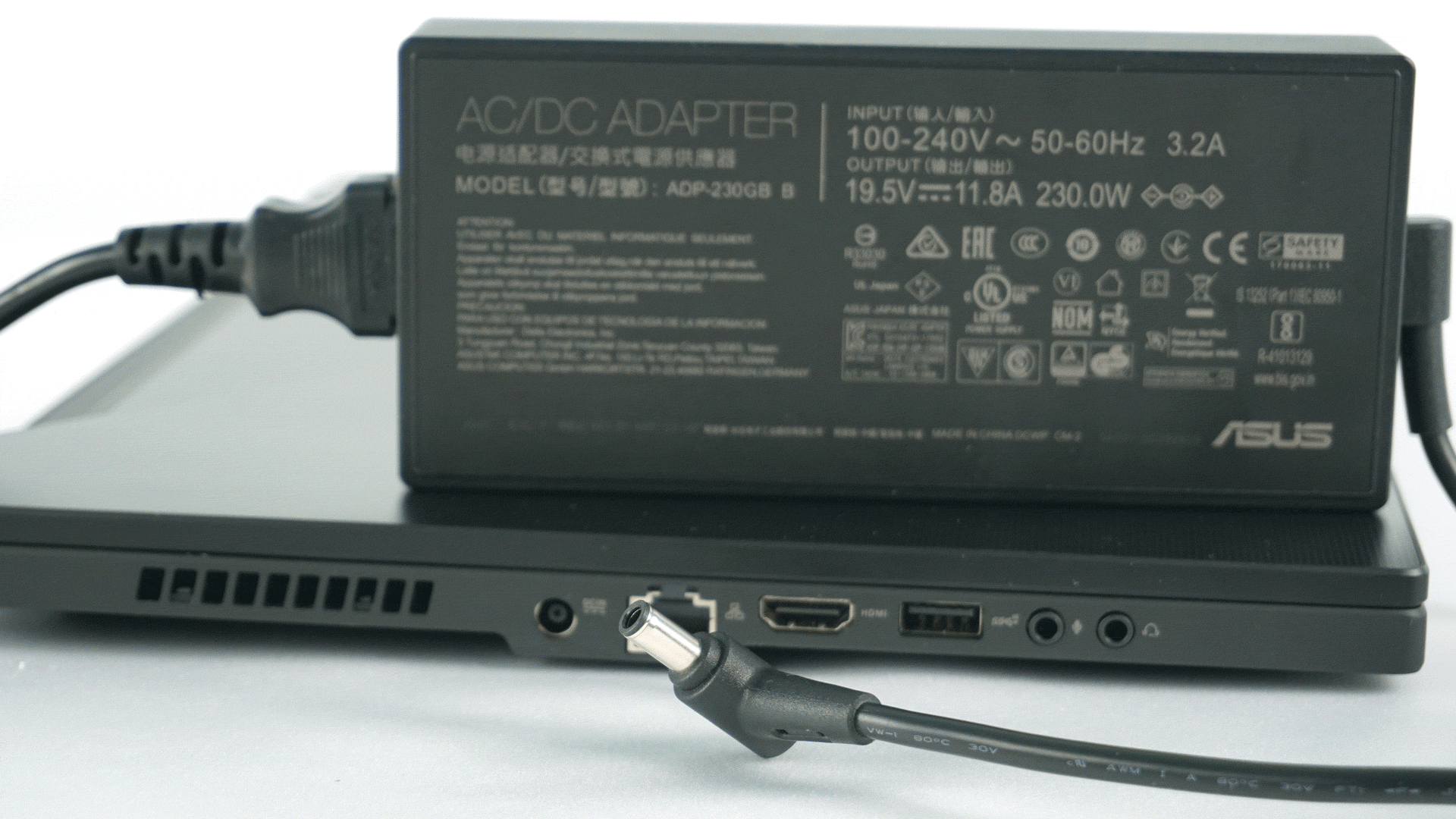Specs and details
You definitely know the ROG Zephyrus gaming line by Asus well, as we only recently brought you a test of the top-notch model Duo 15. The Zephyrus line started with one product, but today several models bear this tag. One of them is the M15 which, however, has little in common with the original Zephyrus. On the outside, it looks like a regular laptop without gimmicks in the form of a secondary display or the AAS.
Basic specifications
| Parameters | Asus ROG Zephyrus M15 GU502LWS | |
| Dimensions | 360 × 252 × 19.9 mm | |
| Weight | 2003 g | |
| Display | 15,6", 16:9 4K 3840 × 2160 px, IPS, 60 Hz, matte, 100 % AdobeRGB, Pantone Validated | |
| Procesor | Intel Core i7-10750H, 6C/12T, 45 W, 14nm | |
| Graphics card | Nvidia GeForce RTX 2070 Max-Q 8 GB GDDR6, 90 W, boost clock 1360 MHz / Intel UHD 630, integrated | |
| Memory | 32 GB DDR4 – 16 GB SODIMM (2933 MHz) replaceable, 16 GB onboard | |
| Storage | 1 TB SSD M.2 PCIe NVMe, upgradeable | |
| Ports | 1× USB-C Thunderbolt 3 40 Gb/s (DisplayPort 1.4, Power Delivery), 1× USB 3.2 Gen 2 10 Gb/s typ A, 2× USB 3.2 Gen 1 5 Gb/s typ A, 1× HDMI 2.0b, 1× RJ-45 Ethernet, 2× 3.5mm jack | |
| Battery size | 76 Wh | |
| Camera resolution | – | |
| Speakers | 2× | |
| Approximate price | 2000 euros |
Details
The black package of the notebook bears the same sign as its back side, a diagonal line from the upper left corner to the lower right one. We received a test sample, which is not intended for sale, so the packaging is not complete either. However, you can expect to find documentation and some small items in the package, as usual.
The package of our test piece contained only a power adapter and the laptop.
ROG Zephyrus M15 is a medium option in the Zephyrus line. Higher is the S15/S17 and of course the Duo 15, lower, on the other hand, the G14/15 with Renoir which we have already tried out. Although it is not the highest model, the M15 also offers very solid equipment. The test piece has a 6-core i7-10750H, but you can also reach for an 8-core i7-10875H. The top of the range of graphics cards is the renewed RTX 2070 Super Max-Q in 90 W with a 1360 MHz boost, lower models will also offer the RTX 2060 and GTX 1660 Ti. Like the Duo 15, there is 32 GB of RAM and 1 TB of SSD with the possibility of expansion by a second SSD. It is a very solid equipment for playing, mainly thanks to the 2070 Super. You won’t find the RTX 2080 in the M15, nor the Core i9. These are reserved for higher models.
The first look at the M15 after unpacking reveals that despite being Zephyrus, it is a surprisingly inconspicuous notebook in a matte black version which does not significantly portray gaming. This is a big change from its predecessors. One could say that it looks dull, but this can be an advantage if you are looking for a “stealth” gaming laptop that you will be able to take to business meetings. However, you will experience the biggest surprise when you hold the M15 in your hands. It is extremely light. I have already praised the Duo 15 for its compact dimensions and weight of 2.5 kg, but the M15 without the secondary display and complicated architecture weighs just over 2 kg. That’s really great value for such a packed laptop. Despite its low weight, the notebook is very firm. The manufacturer achieved these two conflicting properties by using a magnesium alloy chassis.
The back of the test piece in Prism Black offers an unconventional multichromatic effect, which offers an interesting play of colors under refraction of light. But you can also reach for the pure black version of Brushed Black, which is without this effect, but 1 mm thinner. The build quality is nothing to complain about, the laptop is rock solid. Since the Active Aerodynamic System is completely missing here, there are no other hinges, as is usual with Zephyrus, the chassis has no unstable part or weakness.
The big surprise is port selection identical with the top Zephyrus Duo 15. It is a big upgrade for the M15 and it makes it a great candidate for multimedia use. Personally, I am most pleased with the presence of Thunderbolt 3, which was generally lacking in the last Zephyrus generation, and I criticized it a lot. I am glad that the manufacturer has learned their lesson and has already shared this universal port with the novelties. I have been using TB3 since 2015 and I would not want a laptop that does not have one. But back to the M15.
On the right side is the already mentioned Thunderbolt 3 which supports DisplayPort 1.4 and charging via Power Delivery 3.0. It is accompanied by a pair of 5-gigabit 3.2 Gen 1 USB-A ports. The left side has two audio connectors, one 10-gigabit 3.2 Gen 2 USB-A, an RJ45 connector for Gigabit Ethernet and HDMI 2.0b with 4K support at 60 Hz. Here is also a power connector. Really great selection that is often not even offered in flagships. There is perhaps only an SD card reader missing, which is not a habit in gaming laptops at all though.
Unlike the Zephyrus Duo 15, the back is completely blank and you will not find any ports here.
But the three indicators are common, that can be seen when the laptop is both closed and open.
I praise the notch for easier opening of the display lid, even with one hand. I missed this on the Zephyrus G14 and it was tricky to open the laptop with one hand.
The view from above again shows us the unconventional build quality of the display lid as well as the extensive ventilation of the lower part. To remove the bottom cover, quite a few screws need to be removed, but they are all cross-headed, so it’s relatively easy. Interesting is that the bottom right screw is fixed in the cover and when unscrewing it, the cover will also lift, thus avoiding the complicated prying that is common.
After removing the bottom cover, you get to the components. You can see a typical red motherboard and a simple but logical arrangement of components.
The tested configuration offers the second highest possible equipment of the Zephyrus M15 and thus the Intel Core i7-10750H processor with 6 cores and a clock speed of up to 5.0 GHz for 1 core or 4.3 GHz for all core turbo. 32 GB of RAM at 2933 MHz seems good, where 16 GB is on the motherboard and 16 GB in SO-DIMM format. The other 16 GB can be exchanged for 32 GB and thus expand the capacity to a total of 48 GB which is confirmed by the specifications on the manufacturer’s website. There is also a pair of slots for PCIe NVMe M.2 SSDs, one of which is occupied by 1 TB SSD. You can use the second slot to expand the internal storage.
The most important component of a gaming laptop is, of course, the graphics card. The M15 therefore received the RTX 2070 Super in the Max-Q version with 90 W and 1360 MHz in Boost. It will be interesting to compare with other RTX 2070s which we have tested previously. The higher configuration will offer an 8-core Core i7-10875H, which will have higher clock speed, but a higher cooling load can also be expected. In terms of graphics cards, there are only weaker configurations with the RTX 2060 and GTX 1660 Ti to choose from.
Although we do not find the typical AAS cooling here as in most Zephyruses, it cannot be denied that the manufacturer certainly did not forget about cooling in the M15. The cooling system is symmetrical with air intake at the sides and exhaust at the rear. There are also several heatpipes that dissipate heat from the processor and graphics card die, as well as VRM or memory. Like the Zephyrus Duo 15, the M15 boasts of the use of Thermal Grizzly liquid metal, which lowers temperatures and thus increases performance by up to 10 percent which is legit. Remember our test and TIM replacement (an ordinary paste for a liquid metal) in a high-performance laptop. The application is, of course, automated here with precise dosing, so that the right amount of liquid metal is used and thus does not spill out of the contact surfaces of the cooler and die over time.
When you open the display, you can see the hinge of the display move, but the rest of the notebook remains unchanged. This is the biggest difference compared to the original Zephyrus or the new Duo 15. They have two more joints/hinges and either the body lifts from the pad or the secondary display expands.
One of the other typical hallmarks of Zephyrus is the keyboard packed at the bottom edge of the notebook, as the upper part of the base is used for cooling. The M15 is again different in this, as it offers the classic keyboard and touchpad layout that we are used to in laptops. From a practical point of view, of course, it’s better, especially if you often use a laptop on your lap. The keyboard in the bottom half is not very suitable for this use. The layout of the keys is practically identical to the Duo 15, but a column has been added on the right edge and a row above the function keys. There is also a difference in the backlight, which is even here and exactly as you would expect. Duo 15 suffered from uneven backlighting, especially of larger buttons.
The touchpad offers relatively common dimensions and a smooth glass surface. It integrates the right and left mouse buttons and also offers gestures. Thanks to its larger dimensions, it is manipulated better than the compact version on the Duo 15.
The notebook does not have a front camera, similar to the Zephyrus G14 and Duo 15. This can be a problem for home office nowadays. Also if you would like to stream games and be seen on video. Unlike the Duo 15, the camera is not even included in the package and you will have to buy it if you have a use for it. Logically, we will not find face recognition here either, but the absence of the fingerprint reader, that was in G14, is not pleasing.
Compact dimensions often mean a small battery, but the M15 has a 76 Wh battery, which is not a bad value at all. The notebook comes with a 230 W charger, which is connected to the left side via a circular connector. Charging takes two hours, after an hour you are at 79%, which is exactly the same as the charging speed of the Duo 15. Like the top model, the M15 also offers charging via the Thunderbolt 3 USB-C port. However, even here it is true that it is a maximum of 65 W and therefore you cannot count on full power. Unlike the Duo 15, the USB-C charger is not included in the package.
Like the Duo 15, we also got the M15 with a 4K display, which usually means poorer battery life. The difference is that the M15 does not have G-Sync which was not missing in the top model. Clearly, the M15 offers Nvidia Optimus, i.e. switching between dGPU and iGPU which means saving the battery. The Duo 15 surprised with a relatively good battery life of more than three hours, especially considering that it has two displays and a more powerful processor. However, the M15 with more modest equipment, but also a smaller battery, achieved an excellent result for a gaming laptop in our demanding YouTube test. On a single charge, the laptop lasted for almost 5 hours which means placing in the Top 3 among gaming laptops. Really good result, especially for a 4K configuration. With lower brightness and office work, it should be realistic to reach 6–7 hours which is really respectable for a gaming laptop. Of course, the G14 with Renoir is at the forefront in this area, but the M15 is also high above average.
- Contents
- Specs and details
- Testing methodology
- Display tests
- Rendering and Geekbench
- 3D/PC Mark and Unigine Heaven/Superposition
- Gaming tests – dedicated graphics card
- Encryption, encoding
- Memory and storage tests
- Heating and battery life
- Blender – CPU, CUDA and Optix test
- Performance modes
- Utility application
- Conclusion





